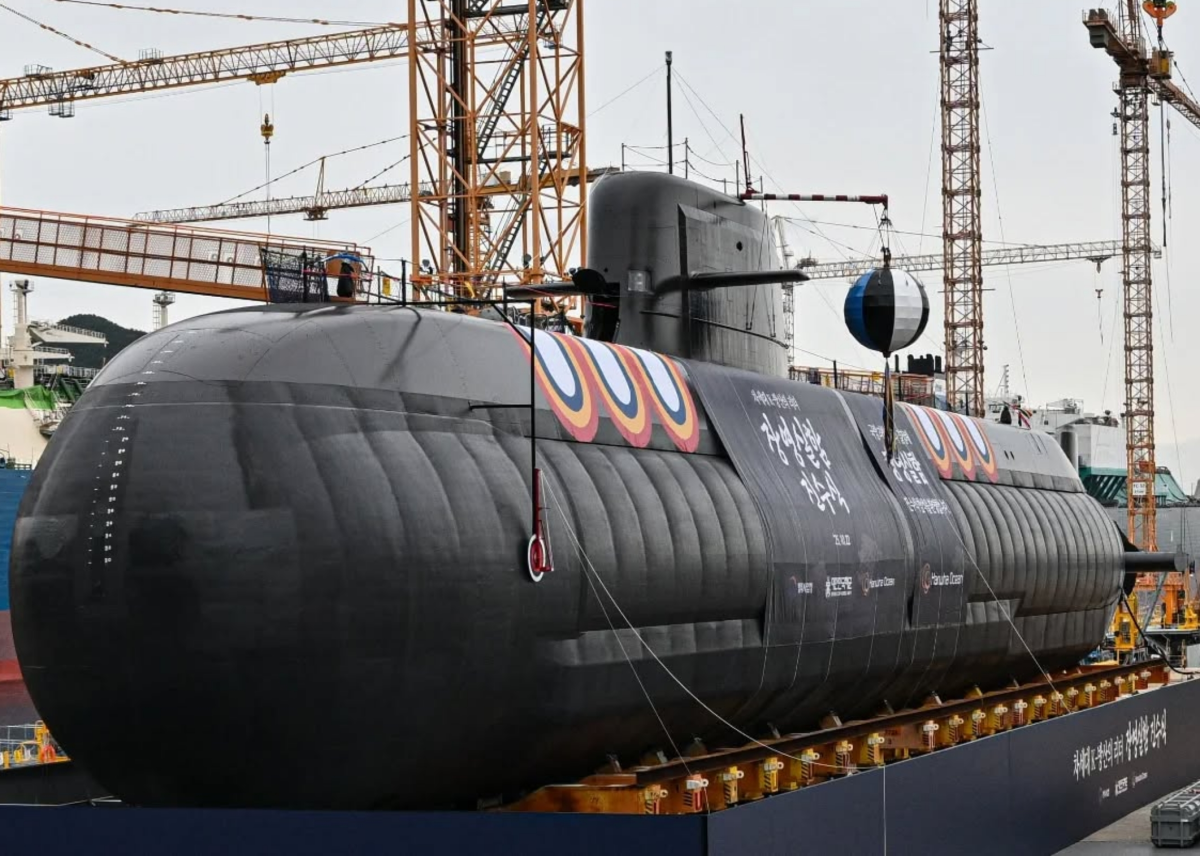
The Philippines is advancing its efforts to strengthen its naval capabilities to counter China’s military threat, with South Korea presenting a submarine development project.
The Chinese Foreign Ministry did not immediately respond to a request from Newsweek for comment.
Why It Matters
The Philippines, a United States mutual defense treaty ally, has overlapping territorial claims in the South China Sea with China, which maintains a naval and Coast Guard presence to assert control over the waters, often leading to clashes between the two.
South Korea, a U.S. treaty ally with a strong shipbuilding industry, has been helping the Philippines modernize its navy through the sale of frigates, corvettes and patrol vessels. The U.S. has also provided former Coast Guard cutters to the Philippines.
Earlier this year, Philippine military chief General Romeo Brawner Jr. revealed plans to acquire at least two submarines—describing it as “a dream for us“—to better defend the archipelagic nation, as China operates the world’s largest navy and Coast Guard.
What To Know
Philippine President Ferdinand Marcos Jr. met with South Korean shipbuilding giant Hanwha Ocean to discuss its proposal for the country’s submarine program on the sidelines of the 2025 Asia-Pacific Economic Cooperation (APEC) Summit in Busan.
The plan presented by Hanwha Ocean includes building KSS-III-class submarines, a submarine base and a maintenance, repair and overhaul center, as well as personnel training, the Philippine Presidential Communications Office said on Saturday.
The proposed submarines would be equipped with modern sonar and combat systems, as well as lithium-ion batteries to increase their endurance. Philippine industries would receive technology transfers to strengthen the country’s self-reliant defense capability.
The defense outlet Naval News reported that the submarine class proposed for the Philippine navy, currently designated KSS-III PN, is a variant of South Korea’s KSS-III Batch-II class, of which the Northeast Asian country recently launched a new vessel.
However, it remains to be seen whether the KSS-III PN submarines will share the same design as the KSS-III Batch-II-class submarines, which are equipped with six torpedo tubes and a 10-cell vertical launching system for firing ballistic missiles at land targets.
According to Naval News, Hanwha Ocean faces competition from France, Spain and a joint Italian-German consortium in the bid to build submarines for the Philippine navy.
Submarines are key to projecting military power in a vast maritime region like the Western Pacific, where the U.S. deploys its fleet to counter the Chinese navy. As of last year, China operated around 12 nuclear-powered and 48 diesel-electric submarines.
What People Are Saying
The defense outlet Naval News commented on Monday: “The Philippines remains among the few countries in the region without a submarine fleet, a gap that underscores the urgency of its modernization drive.”
The Pentagon’s Chinese military power report 2024 commented: “The [People’s Liberation Army Navy] has highly prioritized modernizing its submarine force but its force structure continues to grow modestly as it matures its force, integrates new technologies, and expands its shipyards.”
What Happens Next
The Philippines may place additional orders for naval vessels from foreign shipbuilders or acquire secondhand ships amid China’s rapidly expanding naval and Coast Guard fleets.
